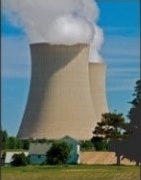By Victor Gilinsky, Henry Sokolski, June 4, 2019
In its effort to revive a moribund US nuclear industry, the Trump administration has put itself in the hands of our national laboratories. The laboratories have used the opportunity to reach for the public purse to pursue their nuclear dream, the same one that they have had since the beginning of the nuclear age, and that now has nothing to do with the country’s energy needs. The starting point on their wish list is a multibillion-dollar “Versatile Test Reactor” at the Idaho national laboratory, to test fuel for a new generation of advanced “fast” plutonium-fueled reactors.
From the beginning, the nuclear power technologists have really had one idea that gripped their imagination: that it is possible to build a plutonium-fueled fast reactor (“fast” because the neutrons released in the fission reaction are not slowed by a moderator) that produces more plutonium than it consumes. This allows continually refueling the reactor and using the excess plutonium to start more such reactors (hence the name “breeder reactors”).
It sounds like getting something for nothing, but in reality, it means using all the relatively cheap natural uranium as fuel instead of only the less than 1 percent that is uranium-235, as is done in the current generation of power reactors […]
In the 1960s the US Atomic Energy Commission saw the fast breeder reactor as the answer to the country’s long-term energy needs. It organized itself to produce prototype breeder reactors that industry would then replicate commercially. Breeder cores needed lots of plutonium as an initial charge. This had to come from reprocessing of spent fuel of existing reactors, so reprocessing was an essential feature of the shift to a fast breeder future. “Atomic” commissions in countries around the world followed this example, all with experts absolutely sure fast breeders would soon take over electricity generation.
As we know, it didn’t happen. The fundamental flaw in the argument was that uranium wasn’t scarce at all, there’s lots of it. Also, the breeder and reprocessing technologies turned out to be much more challenging and expensive than expected. Altogether, they didn’t make economic sense.
Another negative element entered the equation in the late 1970s. In their excitement over the fast breeder, the nuclear community ignored the consequences of feeding plutonium, a fuel but also a nuclear explosive, into commercial channels throughout the country, and ultimately the world. In 1976, to the dismay of fast-breeder enthusiasts, President Gerald Ford announced that US non-proliferation objectives would take precedence and put the technology on the shelf. He added that we could develop nuclear energy perfectly well without it. Jimmy Carter continued these restrictive policies with respect to plutonium.
None of this, however, changed the fast breeder’s Holy Grail status within the nuclear engineering community. That community got another chance during the George W. Bush administration, under a program called Global Nuclear Energy Partnership, or GNEP. This time, instead of arguing uranium resource constraints, an economic non-starter, they focused on the nuclear waste issue and claimed fast reactors (now dubbed as “burners” rather than breeders) had special advantages in dealing with waste.
GNEP proposed to “burn” the (mildly radioactive) longest-lasting waste, by incorporating these elements into the plutonium fuel and consuming them along with the plutonium. The trouble was, making such fuel to commercial standards remained an unsolved problem, and the fast breeder prototype, slated for the Nevada nuclear lab, never got off the ground. In any case, with the advent of the Obama administration, the GNEP program was disbanded, and the Energy Department’s fast reactor program dropped out of sight.
It is now returning for the third time in the guise of the Versatile Test Reactor, which itself is derived from a fast breeder reactor design. Just like the old Atomic Energy Commission did half a century ago, the Energy Department now tells us plutonium-fueled fast reactors are in our energy future, never mind economics or the dangers of flooding the world with plutonium fuel. Under the heading of “Putting America First,” the Energy Department tells us building fast reactors is essential for “protecting our interests,” apparently because the Russians and the Chinese, unconstrained by economics, would be building them, and we would fall behind. It is thus “imperative” to build the several-billion-dollar VTR as a first step.
The first surge of interest in fast breeders the 1960s had a certain rational basis in resource economics, even though it got the basic facts wrong about the scarcity of uranium. The second surge, during the George W. Bush administration, however poorly conceived and opportunistic, was an effort to take advantage of a real public concern about disposal of nuclear waste. The current third push, using the Versatile Test Reactor as the thin end of a larger wedge of government support for fast breeder reactors, is based far less on economics or concern about waste than purely on patriotic slogans. We don’t need it. Congress should say, “No.”
Original article




